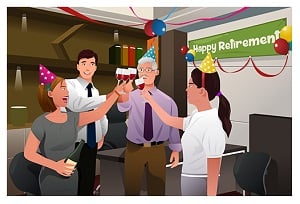Posted by Caveo Learning ● September 17, 2015
How to Meet the Challenges of an Aging Workforce
 Is your organization ready to deal with the challenges of an aging workforce?
Is your organization ready to deal with the challenges of an aging workforce?
Baby Boomers are retiring at a staggering pace of 10,000 per day, and they're taking with them a wealth of job knowledge and specialized skills acquired throughout their long careers. That pace will likely pick up as the post-recession economy continues to improve and fewer Boomers feel the need to postpone retirement.
The good news is that Millennials—the most educated generation in history—are available and eager to pick up the slack. For a smooth generational workforce transition to take place, however, companies and L&D organizations need to have a strategy in place to capture the real-world knowledge and skills of Boomers and transfer it to younger workers.
To make sure critical tribal knowledge doesn't fall through the cracks, organizations need to put together a succession planning strategy that includes a comprehensive knowledge and skills capture component. Start by addressing the following three points.
Identify Aging All-Stars and Future Leaders
Does your organization have the tools in place to identify the top performers? If you have a workforce planning process in place, you may already know which positions are the most critical to fill and the requirements and competencies for these roles. If not, this is the time to start asking questions and putting some simple processes in place to get managers started.
Conduct talent and skills assessments, identifying which knowledge, skills, and abilities are represented among your Boomer workforce. On the other side of the coin, parse performance data and employ other talent review tools to help identify up-and-coming talent and future leaders. Compare what skills will be lost to retirement against the strengths of the cohort of top prospects, and focus recruitment and training efforts on the gap areas.Interview the top-flight impending retirees, both to start the knowledge capture process and to gauge their willingness to assist in the transition process. Some questions to ask include:
- Are you willing to work with a junior employee to help develop their career?
- Are you willing to go through mentoring/coaching training to prepare you for a development role?
- What are some of the most valuable experiences in your career, and are there any current or upcoming projects that can help us to recreate such an experience for younger workers?
- Are you willing to write down some experiences in a lessons-learned knowledge management tool?
- What advice would you give to yourself if you were starting out in the industry?
Create Diverse, Cross-Generational Partnerships
Team Baby Boomers with Millennials and Gen-Xers, asking Boomers to assume a mentor/coach role. The aim here is both to transfer rote knowledge and to teach positive workplace habits. In the sports world, this is known as showing how to play the game "the right way." Benefits of intergenerational partnerships include exposure to traits like consensus leadership and refined communication skills.
Conduct experience reviews with the most successful Boomers, especially those in leadership positions, and determine which experiences these employees have in common. Identify opportunities for replacements to have similar experiences.
The chart below (source) indicates some typical generational traits for Baby Boomers, Generation X, and Millennials. Note that Generation X and Millennials tend to be willing to take on more responsibility and are often eager to learn from their Baby Boomer mentors, making the practice of cross-generational mentoring especially promising.
|
Baby Boomers |
Generation X |
Millennials |
|
|
|
Besides actively teaming them, another way to facilitate mentorship is to create an accessible online repository of interviews with top performers and mentors, whether in video format or in the form of transcripted conversations that highlight advice and lessons learned. Just remember to choose mentors wisely and prepare them for their mentoring role.
Document and Store Tribal Knowledge
Once you have captured the information, it needs to be stored and made easily accessible. Use of a knowledge management system or a well organized SharePoint site will help ensure useful information is properly housed.
A good place to start is by taking inventory of what assets are available. There may be video footage, images, and other resources that will be helpful. While Boomers may not want to blog about their experiences, they might be able to create podcasts using a headset and an easy-to-use, free software like Audacity.
Consider setting up a YouTube channel with videos or footage from projects that have been captured.
When organizing your knowledge management system, be sure to consider the audience and arrange topics and subtopics in a way that makes sense to those who will be accessing it, such as by business unit, discipline, and project.
Don't wait until retirements start happening en masse to preserve the knowledge and expertise of your workforce. You will also get a better view of your talent pool, and you will make the intergenerational collaboration a valuable part of your company’s culture.
Topics: Managed Services
